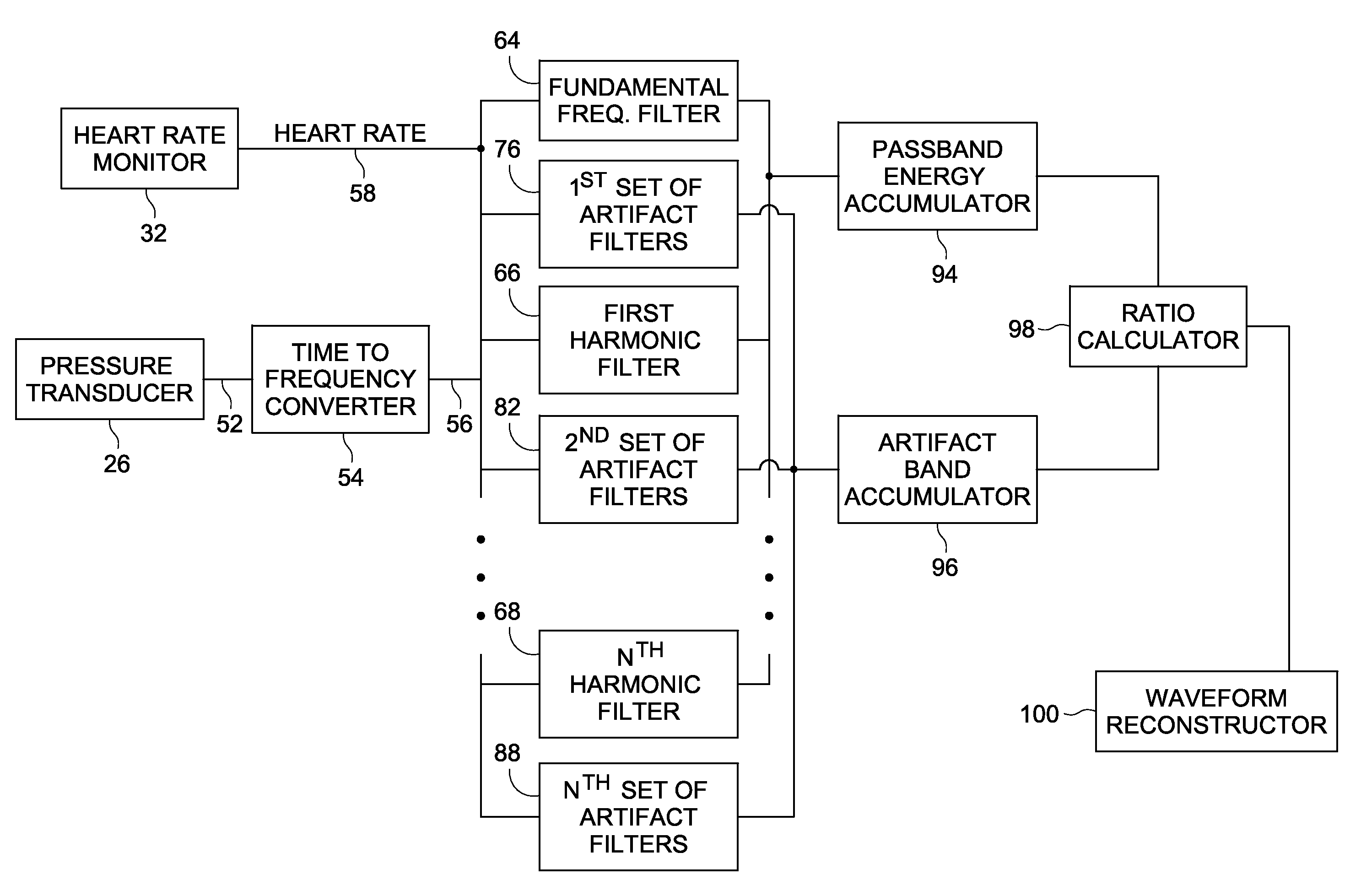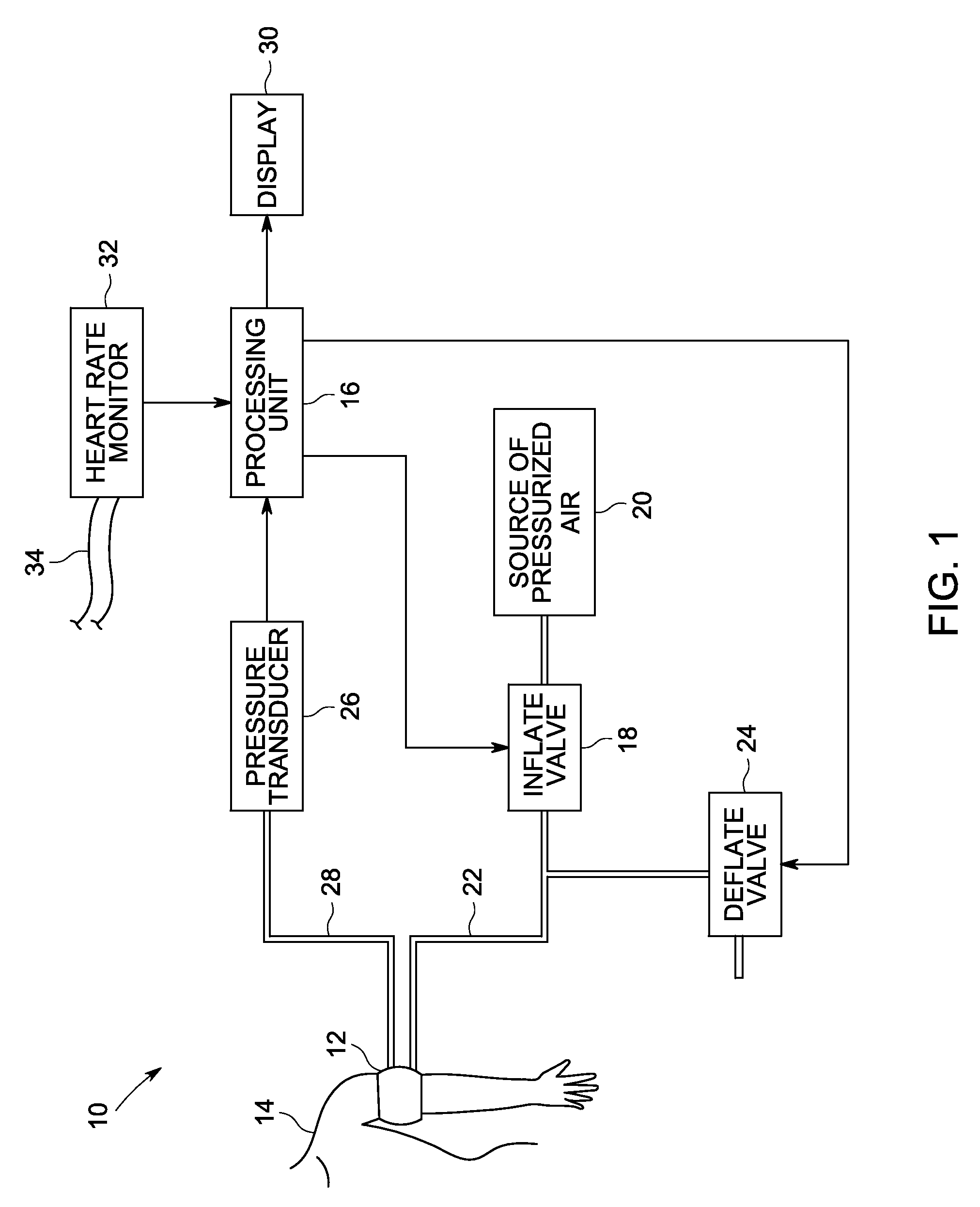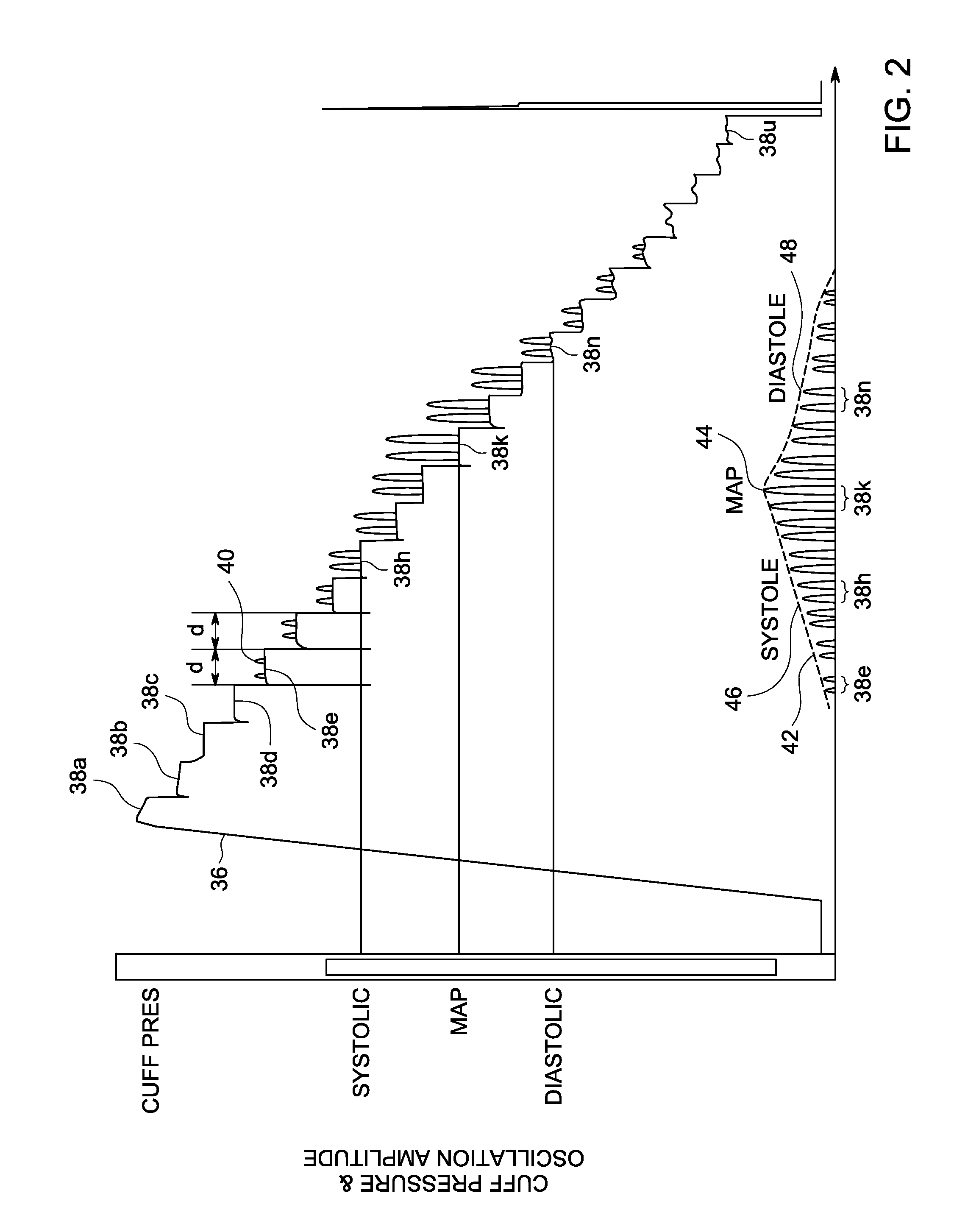Use of the frequency spectrum of artifact in oscillometry
a technology of artifacts and oscillometry, which is applied in the field of non-invasive blood pressure monitoring, can solve the problems of inability to completely mask or otherwise render the oscillometric data useless, involuntary movements such as patient shivering, and the inability to produce high-frequency artifacts in the oscillometric data
- Summary
- Abstract
- Description
- Claims
- Application Information
AI Technical Summary
Benefits of technology
Problems solved by technology
Method used
Image
Examples
Embodiment Construction
[0022]FIG. 1 depicts an embodiment of a non-invasive blood pressure (NIBP) monitoring system 10. The NIBP monitoring system 10 includes a pressure cuff 12 that is a conventional flexible, inflatable and deflatable cuff worn on the arm or other extremity of a patient 14. A processing unit 16 controls an inflate valve 18 that is disposed between a source of pressurized air 20 and a pressure conduit 22. As the inflate valve 18 is controlled to increase the pressure in the cuff 12, the cuff 12 constricts around the arm of the patient 14. Upon reaching a sufficient amount of pressure within the cuff 12, the cuff 12 fully occludes the brachial artery of the patient 14.
[0023]After the cuff 12 has been fully inflated, the processing unit 16 further controls a deflate valve 24 to begin incrementally releasing pressure from the cuff 12 back through pressure conduit 22 and out to the ambient air. During the inflation and incremental deflation of the cuff 12, a pressure transducer 26, pneumatic...
PUM
 Login to View More
Login to View More Abstract
Description
Claims
Application Information
 Login to View More
Login to View More - R&D
- Intellectual Property
- Life Sciences
- Materials
- Tech Scout
- Unparalleled Data Quality
- Higher Quality Content
- 60% Fewer Hallucinations
Browse by: Latest US Patents, China's latest patents, Technical Efficacy Thesaurus, Application Domain, Technology Topic, Popular Technical Reports.
© 2025 PatSnap. All rights reserved.Legal|Privacy policy|Modern Slavery Act Transparency Statement|Sitemap|About US| Contact US: help@patsnap.com



